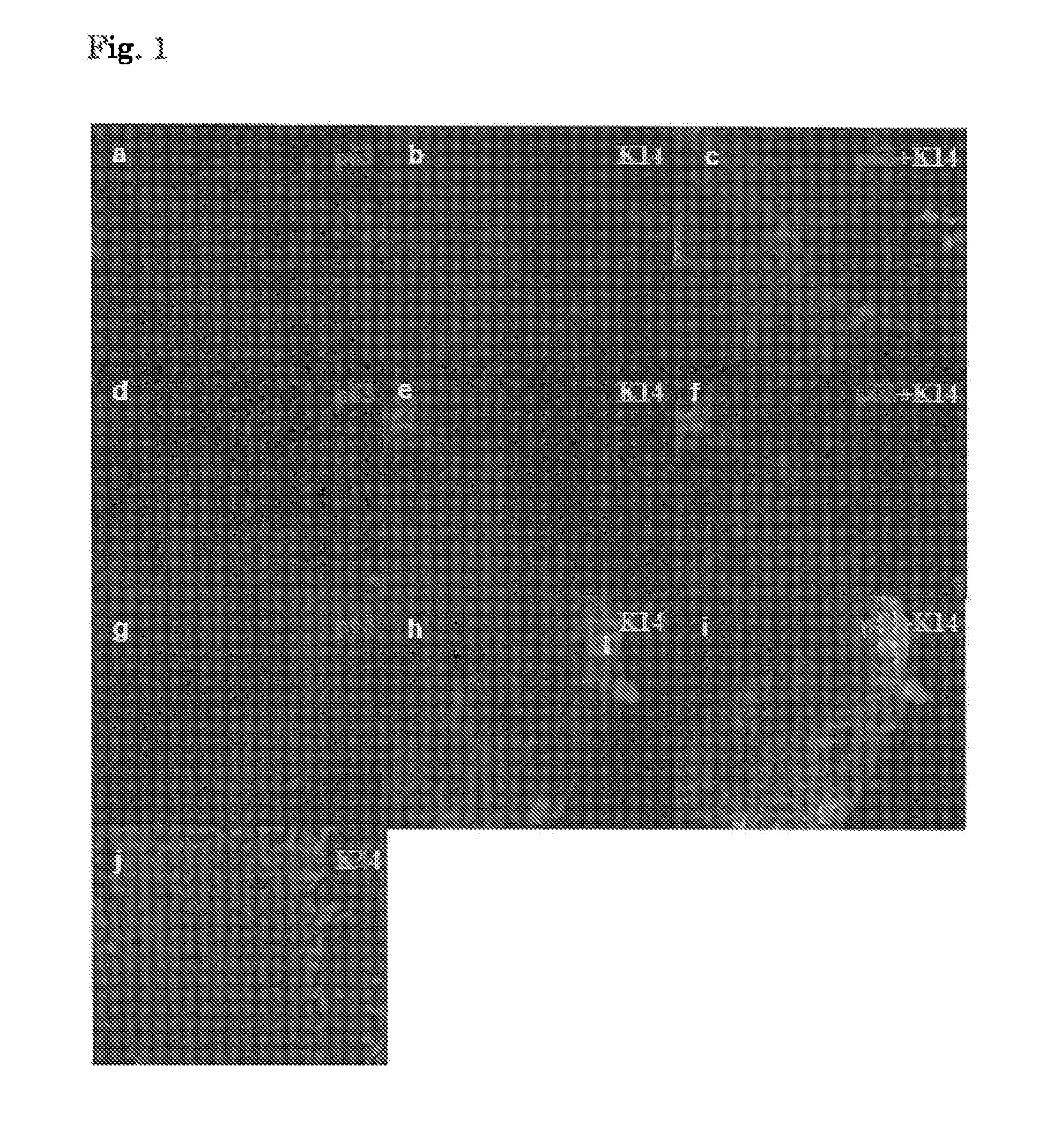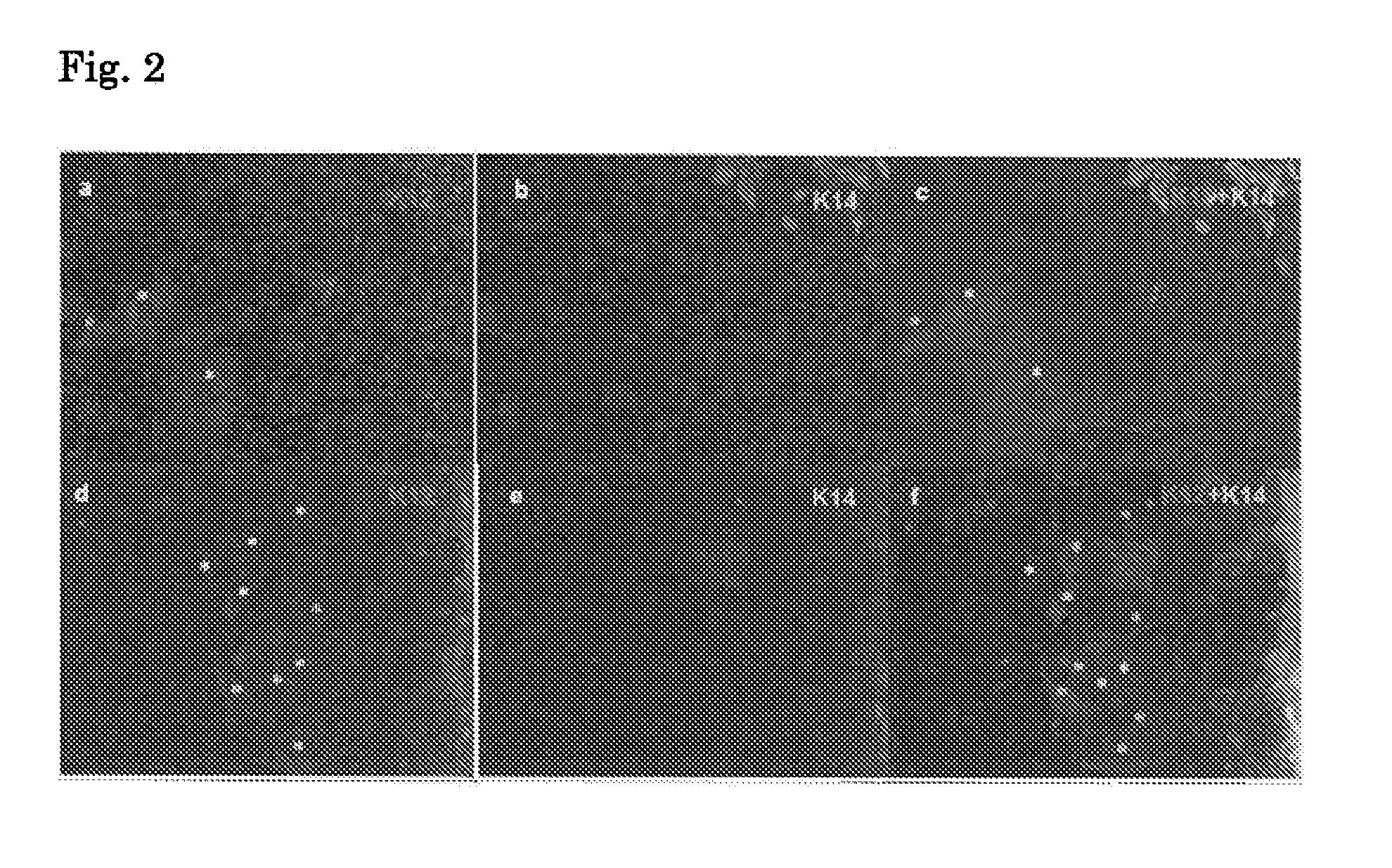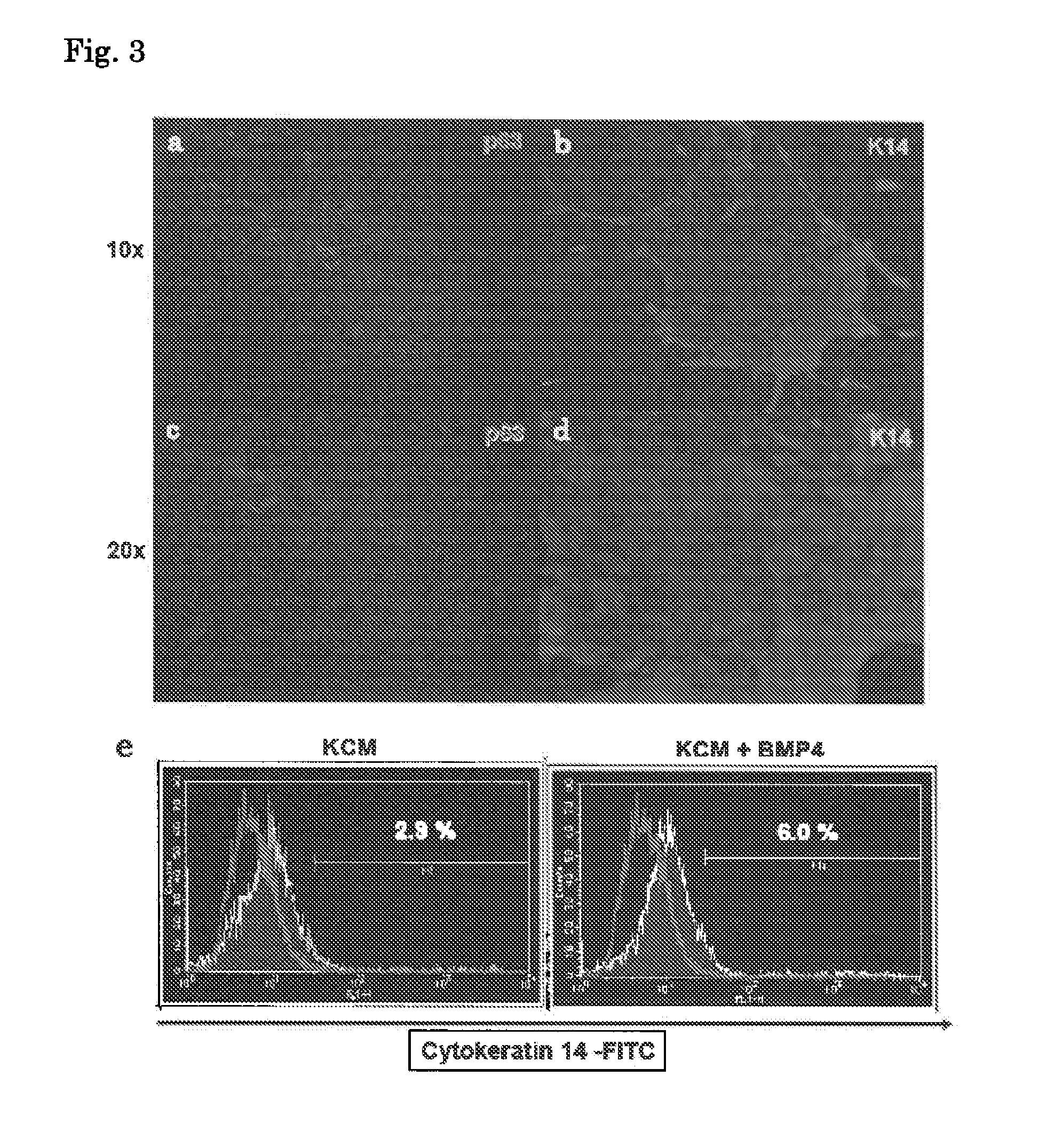Method for inducing differentiation into epithelial progenitor cell/stem cell population and corneal epithelial cell population from induced pluripotent stem cells
a technology of stem cell population and epithelial cell population, which is applied in the field of inducing differentiation into epithelial progenitor cells/stem cells and corneal epithelial cell population from induced pluripotent stem cells, can solve the problems of absolute donor shortage and rejection after transplantation, and the method of using corneal limbus epithelial cells cannot be adapted to patients with disease in both eyes, and achieves the effect of reducing rejection
- Summary
- Abstract
- Description
- Claims
- Application Information
AI Technical Summary
Benefits of technology
Problems solved by technology
Method used
Image
Examples
example 1
Induction of Differentiation into Epithelial Cells from Mouse iPS Cells
1. Culture of Mouse iPS Cells:
[0134]Mouse iPS cells were kindly provided by Professor S. Yamanaka from the Kyoto University (Okita K et al., Nature (2007) 448: 313-317). SNL (SNL76 / 7) was kindly provided by Dr. Allan Bradley from the Bayer College of Medicine. The mouse iPS cells were maintained with this SNL (SNL76 / 7) as feeders using a medium for SNL feeders shown below.
[0135]SNL cells treated with mitomycin (MMC) were inoculated to a gelatin-coated culture dish and used as feeder cells. The mouse iPS cells were inoculated thereonto and maintained at 37° C. in a 5% CO2 atmosphere using a medium for iPS cell culture.
SNL feeder mediumDMEM (Nacalai Tesque)7% FBS (Daiichi Chemical)2 mM L-Glutamine (Invitrogen)1% Penicillin-Streptomycin (Invitrogen, 100x)
Medium for iPS cell cultureDMEM (Nacalai Tesque)15% FBS (Daiichi Chemical)2 mM L-Glutamine (100x, Invitrogen)1% Penicillin-Streptomycin (Invitrogen, 100x)1 μg / ml Pu...
example 2
Induction of Differentiation into Epithelial Cells from Human iPS Cells
[0161]1. Culture of Human iPS cells:
[0162]Human iPS cells were kindly provided by Professor S. Yamanaka from the Kyoto University (Takahashi K, Yamanaka S., et al. Cell, (2007) 131: 861-872). The human iPS cells were maintained with MEF cells (KITAYAMA LABES CO., LTD.) as feeders using a medium for MEF feeders shown below.
[0163]Specifically, MEF cells treated with mitomycin were inoculated to a gelatin-coated culture dish and used as feeder cells. The human iPS cells were inoculated thereonto and maintained at 37° C. in a 5% CO2 atmosphere using a medium for primate ES cells (Reprocell Inc.) supplemented with 4 ng / ml bFGF.
MEF feeder mediumDMEM (Nacalai Tesque)10% FBS (Daiichi Chemical)1% Penicillin-Streptomycin (Invitrogen, 100x)
2.1. Modified KCM (Keratinocyte Culture Medium) Method
(1) Culture on Collagen
[0164]The human iPS cells on the MEF feeders were treated with 0.25% trypsin / EDTA to disrupt the iPS cell colo...
example 3
Effect of Retinoic Acid on Induction of Differentiation into Epithelial Cells (Modified KCM Method)
[0171]The modified KCM method shown in Example 1 was examined for the influence of retinoic acid addition on the induction efficiency of differentiation into epithelial cells from mouse iPS cells or ES cells.
1. Differentiation Induction in Presence of Retinoic Acid
(1) Immunostaining Method
[0172]According to Example 1, mouse iPS cells were cultured on collagen using (i) a KCM medium, (ii) a KCM medium supplemented with 0.5 nM BMP4, or (iii) a KCM medium supplemented with 0.5 nM BMP4+1 μM retinoic acid.
[0173]Likewise, mouse ES cells (RF8; provided by Dr. Robert Farese, Jr. from the Gladstone Institute) were cultured on collagen using (i) a KCM medium, (ii) a KCM medium supplemented with 0.5 nM BMP4, or (iii) a KCM medium supplemented with 0.5 nM BMP4+1 μM retinoic acid.
[0174]The cells after 21-day culture (differentiation induction) were examined for their respective expressions of p63 ...
PUM
 Login to View More
Login to View More Abstract
Description
Claims
Application Information
 Login to View More
Login to View More - R&D
- Intellectual Property
- Life Sciences
- Materials
- Tech Scout
- Unparalleled Data Quality
- Higher Quality Content
- 60% Fewer Hallucinations
Browse by: Latest US Patents, China's latest patents, Technical Efficacy Thesaurus, Application Domain, Technology Topic, Popular Technical Reports.
© 2025 PatSnap. All rights reserved.Legal|Privacy policy|Modern Slavery Act Transparency Statement|Sitemap|About US| Contact US: help@patsnap.com



